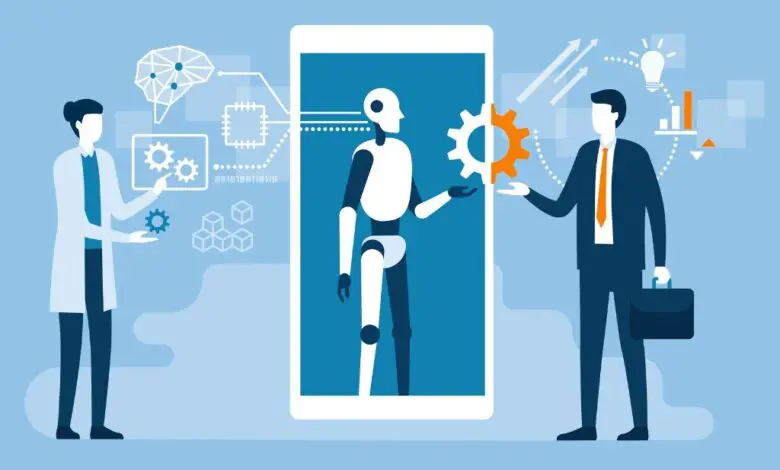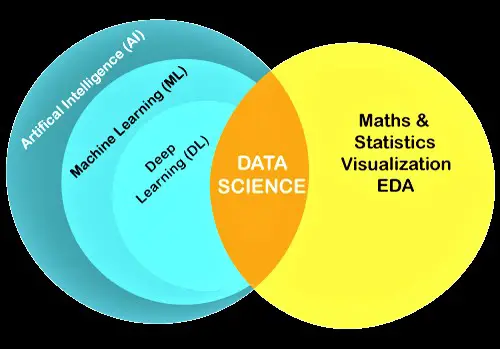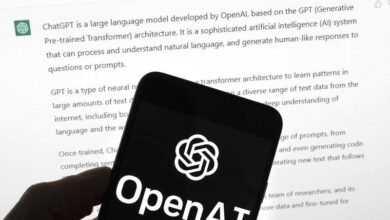Data science vs. machine learning: What’s the difference?
Data Science vs. Machine Learning: Unveiling the Distinctions

Data Science vs. Machine Learning: In the rapidly evolving landscape of technology, two terms frequently make headlines: data science and machine learning. They are often used interchangeably, leading to confusion for those new to the field. However, these two concepts are distinct, each with its role and significance. In this comprehensive article, we delve into the contrasts between data science and machine learning, shedding light on their individual contributions to the digital realm.

Data Science and Machine Learning: A Fundamental Difference
At the outset, it’s crucial to comprehend the fundamental distinction between data science and machine learning. Data science is an interdisciplinary field that encompasses various techniques, algorithms, processes, and systems to extract insights and knowledge from structured and unstructured data. On the other hand, machine learning is a subset of artificial intelligence that focuses on enabling systems to learn from data and improve their performance over time without being explicitly programmed.
Exploring Data Science: Unveiling Its Depth
Data science encompasses a broader scope than machine learning. It involves data collection, cleaning, and analysis, often using statistical techniques. The goal is to uncover patterns, trends, and insights that can drive informed decision-making. Data scientists employ a range of tools and programming languages, such as Python and R, to manipulate data and draw meaningful conclusions.
Machine Learning: The Heart of AI Advancements
Machine learning, while a part of data science, takes center stage in the realm of artificial intelligence. It revolves around creating algorithms that allow systems to learn and make predictions or decisions based on data. Supervised, unsupervised, and reinforcement learning are common approaches, each catering to different types of learning tasks. Machine learning algorithms find applications in various domains, from recommendation systems to image recognition.
Key Distinctions: Where Data Science and Machine Learning Diverge
Focus and Objective:
Data science focuses on extracting insights and solving complex problems using data analysis. Machine learning focuses on creating algorithms that allow systems to learn from data and improve their performance.
Scope:
Data science involves data collection, cleaning, analysis, and visualization. Machine learning is concerned with creating predictive models, classifications, and pattern recognition.
Tools and Techniques:
Data science employs tools like SQL, Excel, and Tableau for data manipulation and visualization. Machine learning utilizes algorithms like decision trees, neural networks, and support vector machines.
Decision vs. Learning:
Data science aids in making data-driven decisions. Machine learning focuses on learning from data to make predictions or decisions.
Human Involvement:
Data science relies on human intervention for extracting insights. Machine learning automates decision-making processes by learning patterns from data.

The Symbiotic Relationship: Data Science and Machine Learning
While distinct, data science and machine learning share a symbiotic relationship. Data science provides the necessary foundation by preprocessing and preparing data for machine learning algorithms. Machine learning, in turn, utilizes the insights extracted by data science to improve accuracy and effectiveness.
Applications That Set Them Apart
The applications of data science and machine learning are diverse and
impactful:
Data Science Applications:
Customer segmentation, market analysis, fraud detection, sentiment analysis, and recommendation systems.
Machine Learning Applications: Image recognition, natural language processing, autonomous vehicles, healthcare diagnostics, and personalized marketing.
Faqs
What is the primary goal of data science?
Data science aims to extract meaningful insights and knowledge from data to facilitate informed decision-making.
Can data science exist without machine learning?
Yes, data science can exist without machine learning. Data analysis and visualization are essential components of data science.
How does machine learning contribute to artificial intelligence?
Machine learning enables systems to learn from data and improve their performance, making it a core component of artificial intelligence.
Are data science and machine learning applicable only to large datasets?
No, while they can handle large datasets, data science and machine learning can also be applied to smaller datasets with relevant insights.
What programming languages are commonly used in data science?
Python and R are widely used programming languages in data science for data manipulation, analysis, and visualization.
Is machine learning limited to supervised learning?
No, machine learning includes supervised, unsupervised, and reinforcement learning, catering to various learning paradigms.
How do data scientists clean and preprocess data?
Data scientists remove inconsistencies, handle missing values, and transform data into a suitable format for analysis.
What’s the role of feature engineering in machine learning?
Feature engineering involves selecting and transforming relevant variables to improve the performance of machine learning models.
Can data science and machine learning replace human intuition?
They enhance decision-making by providing data-driven insights, but human intuition and expertise remain invaluable.
Is deep learning a subset of data science or machine learning?
Deep learning is a subset of machine learning, specifically focused on neural networks and complex pattern recognition.
Conclusion:
In the dynamic landscape of technology, data science and machine learning stand as pillars of innovation. While they possess distinct identities and applications, their collaboration propels the evolution of artificial intelligence and data-driven decision-making. Understanding their differences is crucial for anyone navigating the realms of technology, as these fields continue to shape our digital world.




